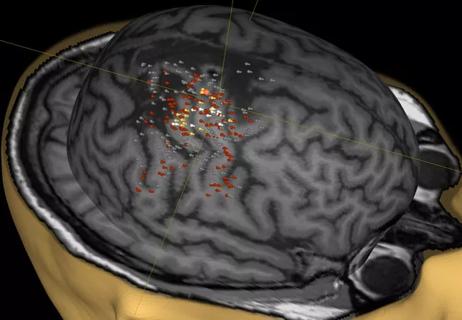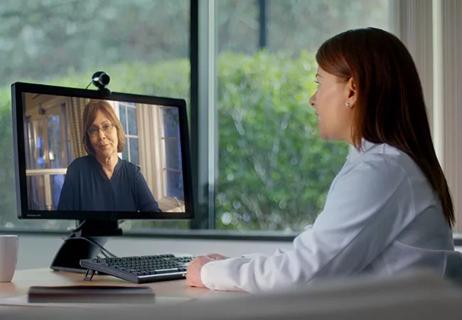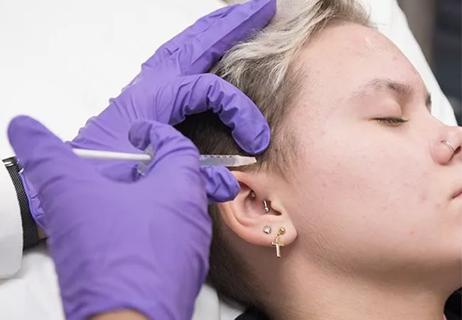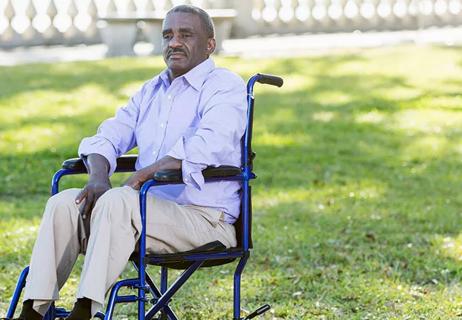Advertisement
‘Go! To Sleep’ CBT-I program brings insomnia therapy close to home

A web-based cognitive behavioral therapy program for insomnia (CBT-I) is helping improve sleep in populations ranging from individuals with insomnia disorder to people with diverse chronic conditions that negatively impact sleep. Known as Go! to Sleep℠, the online tool developed by Cleveland Clinic sleep experts is especially useful for patients unable to access traditional in-person CBT-I because of geographic, medical or financial barriers.
Advertisement
Cleveland Clinic is a non-profit academic medical center. Advertising on our site helps support our mission. We do not endorse non-Cleveland Clinic products or services. Policy
“Our goal is to meet the needs of people who can benefit from better sleep wherever they are and regardless of other medical problems,” says Michelle Drerup, PsyD, DBSM, a staff psychologist and Director of Behavioral Sleep Medicine with Cleveland Clinic’s Sleep Disorders Center and Department of Psychiatry and Psychology. “Not everyone can meet regularly with a therapist in person, so having an effective and easily accessible online program can fill the gap for a variety of patient populations.”
The six-week program consists of daily lessons providing education about the physiology and importance of sleep and how best to enhance it. Beneficial daily activities and relaxation exercises are assigned, while pharmaceutical sleep aids are discouraged. Participants maintain an online sleep log to assess sleep efficiency and chart their progress.
“Go! to Sleep provides a multispecialty, comprehensive plan that’s similar to the one we offer people who come to our Sleep Disorders Center,” says Dr. Drerup, who helped develop and research the program. “It’s gratifying to know we can expand our reach and increase convenience to patients for a very low cost.”
The program can be purchased for $40 on Cleveland Clinic’s website.
Go! to Sleep was first studied in a randomized trial in 88 adults (43 intervention, 45 control) with primary insomnia (Telemed J E Health 2017;23:590-599). The control group was a waitlist group whose members received the treatment at the end of the study period.
Outcomes were assessed with the Insomnia Severity Index (Sleep. 2011;34:601-608), a seven-item self-reported questionnaire on nighttime wakefulness , daytime functioning and impact on quality of life. Dr. Drerup notes that the Insomnia Severity Index is not an objective measure of how long it takes to fall asleep or time awake at night, but rather an assessment of how patients feel about their sleep. This subjective aspect, she emphasizes, is an important component of insomnia, as worry about lack of sleep can feed into a vicious cycle of nighttime wakefulness.
The study found clinically meaningful improvements in insomnia severity with sustained benefits over four months, establishing that the program offers an effective treatment option for people with insomnia.
Since then, small similarly designed studies have tested the tool in patients with insomnia and comorbid disease:
Advertisement
In general, participants in these studies who completed the program had significantly improved outcomes. However, dropout rates were high, ranging from approximately 20% to 40%.
“Many patients in the chronic illness studies were older and may not be as comfortable accessing healthcare via computer,” Dr. Drerup speculates. “Their medical illness may also interfere with their ability and motivation to complete the program.”
Another study is underway in 40 people with multiple sclerosis and insomnia. It involves two experimental arms: In one, subjects exclusively use Go! to Sleep, while in the other they use the program in addition to having semi-structured biweekly online video-chat sessions or phone calls with trained research personnel. The hope is that the additional program support will increase the participation rate. The study is expected to be completed later this year.
In an ongoing long-term collaboration with principal investigator Cheryl Thompson, PhD, of Case Western Reserve University, Dr. Drerup’s team is also testing the effectiveness of Go! to Sleep for improving sleep duration and quality in women at high risk of breast cancer. That project is also exploring whether the program has the ability to improve breast cancer incidence and/or tumor phenotype among women at high risk of breast cancer.
Advertisement
Dr. Drerup says her team has considered investigating the use of Go! to Sleep in patients with chronic pain syndromes and/or rheumatologic disorders. Additionally, the ongoing multiple sclerosis study will likely be expanded if its results are encouraging.
She is also looking at options to enhance the provider-patient interface to make the program more widely used. She herself tracks the progress of her patients who use the tool and regularly provides them with online encouragement and counseling. Keeping clinicians’ already busy schedules in mind, she hopes to develop methods to more easily incorporate provider support, such as including progress reports and patient feedback in a clinic’s electronic medical record or enlisting a program navigator to handle routine interactions and involve the primary provider when needed.
“Online delivery of cognitive behavioral therapy has tremendous potential to improve health outcomes in a very cost-effective way,” says Dr. Drerup, who recently detailed considerations and controversies related to online CBT-I in a review article in Sleep Medicine Clinics (2019;14:283-290). “If a person is not sleeping well, they’re not functioning well, and that holds true across the whole range of medical conditions.”
Advertisement
Advertisement

A noninvasive approach to map eloquent areas before surgery

Physician reimbursement policy experts join forces with IT and coders to enable digital transformation

Minority Stroke Program focuses on outreach to racial and ethnic minority communities

Excellent response seen with ongoing use in patients as young as 11

Q&A with a psychiatrist in Cleveland Clinic’s Transgender Surgery and Medicine Program

Time constraints, language barriers, substance misuse, mood disorders targeted for improvements

Project draws $1.6M to leverage telemedicine to create medical home, ease transition to adult care

Comorbid depression is only one of the likely warning signs